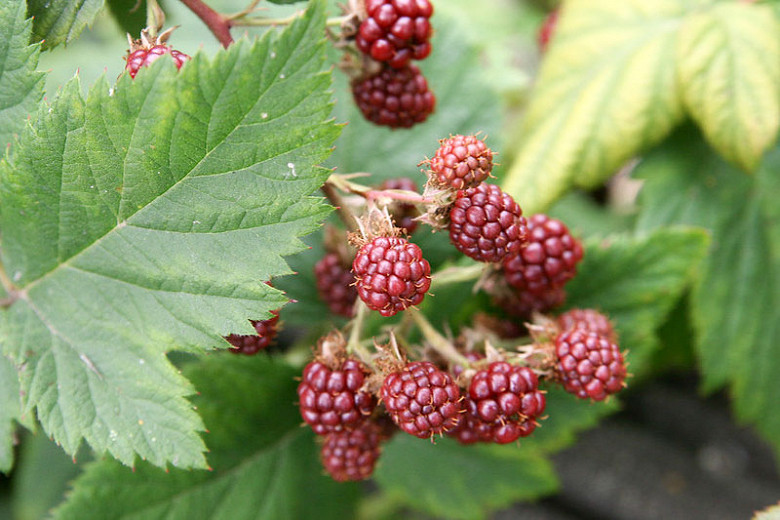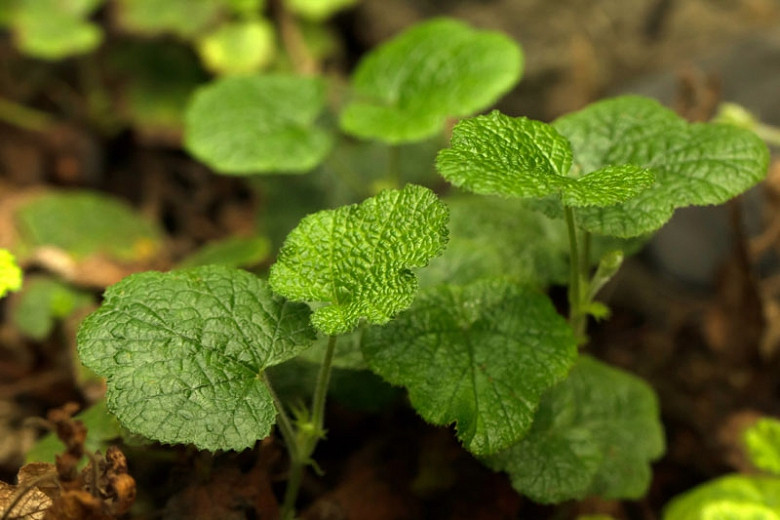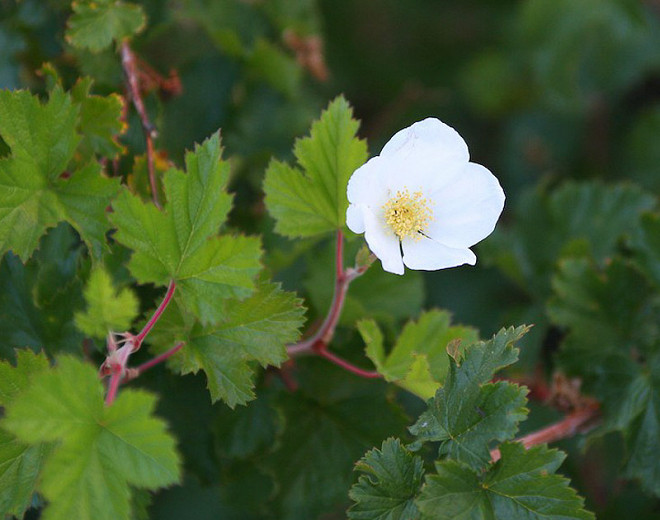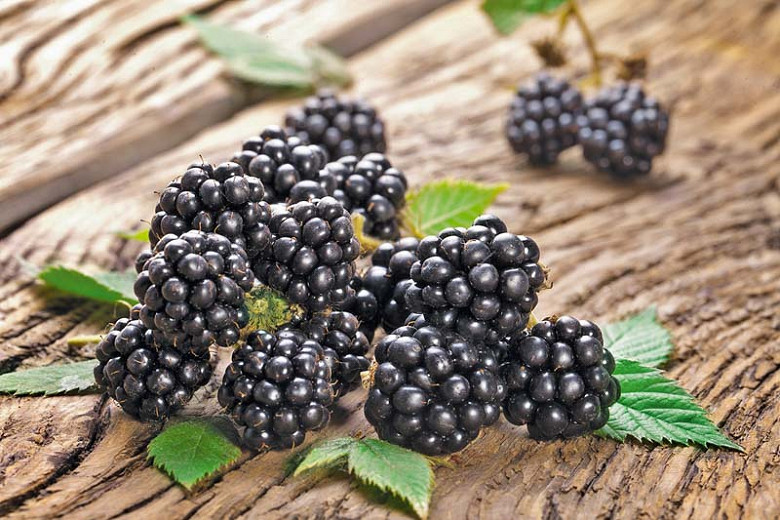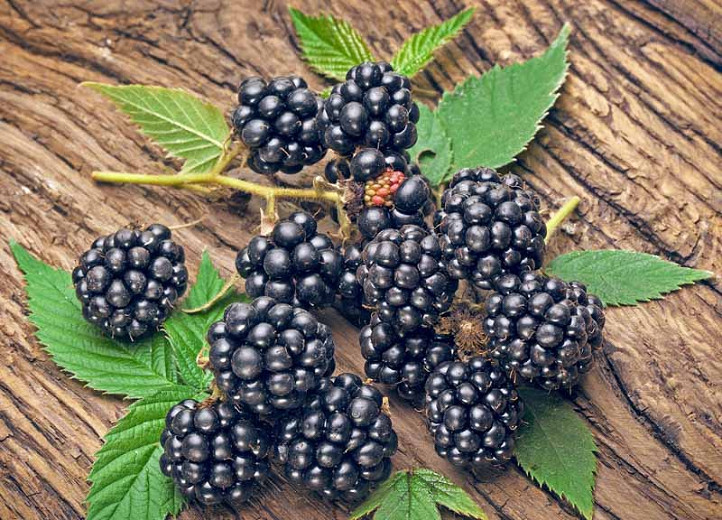Rubus canadensis (Smooth Blackberry)
Rubus canadensis (Smooth Blackberry) is a thicket-forming, deciduous shrub with long, slender, arching canes that are free of prickles and spines. The smooth stems are clothed with alternate, palmately compound leaves, 4-8 in. (10-20 cm) long, typically with 5 leaflets. In early to mid-summer, a profusion of 5 petaled white flowers are borne in clusters of up to 25 blossoms. Rich in pollen and nectar, they attract many pollinators, including bees and butterflies. The blossoms give way to an abundance of small, edible, blackberries that persist into fall. The berries are sweet, juicy, and richly flavored. They are one of the most cherished wild blackberries and can be eaten fresh, dried, or made into preserves. Game birds, songbirds, raccoons, chipmunks, and squirrels feast on them. During the winter, birds and small mammals eat the seeds left from the rotted fruits. Smooth Blackberry spreads by underground rhizomes. It is an excellent colonizer and is able to grow on low nutrient soil, making it a species used to control erosion and recover eroded terrain. It can create extensive colonies or nearly impenetrable thickets that provide excellent cover for wildlife. Shade intolerant, it shows vigorous growth in full sunlight and invades and colonizes many types of disturbed sites. Native to eastern North America, Rubus canadensis occurs naturally in open woodlands, thickets, mountain ridges, recently disturbed sites, and roadsides in cool and moist climates. Smooth Blackberry can be used as a hedge or barrier but use with caution. Smooth Blackberry can become aggressive and difficult to eliminate.
- Grows up to 7-10 ft. tall (210-300 cm) and 6-12 ft. wide (180-360 cm).
- A full sun to part shade lover, this plant is best grown in slightly acidic, moist but well-drained soils.
- In late winter, remove any canes damaged by winter and thin, as needed, the remaining canes.
- No serious pest or disease issues.
- Propagate by division or stem cuttings.
- Native to eastern North America from Newfoundland to Ontario and along the Atlantic Coast south to Georgia and inland to Kentucky and Tennessee.
Requirements
| Hardiness | 3 – 7 |
|---|---|
| Plant Type | Fruit, Shrubs |
| Plant Family | Rubus – Brambles |
| Exposure | Full Sun, Partial Sun |
| Season of Interest | Summer (Early,Mid,Late)Fall |
| Height | 7' – 10' (210cm – 3m) |
| Spread | 6' – 12' (180cm – 3.6m) |
| Water Needs | Average |
| Maintenance | Low |
| Soil Type | Clay, Loam, Sand |
| Soil pH | Acid, Neutral |
| Soil Drainage | Moist but Well-Drained |
| Characteristics | Showy, Fruit & Berries |
| Native Plants | United States, Midwest, Michigan, Minnesota, Ohio, Wisconsin, Northeast, Connecticut, Maine, Massachusetts, Maryland, New Hampshire, New Jersey, New York, Pennsylvania, Vermont, Southeast, Georgia, Kentucky, North Carolina, South Carolina, Tennessee, Virginia, West Virginia |
| Attracts | Bees, Birds, Butterflies |
| Garden Uses | Hedges and Screens |
| Garden Styles | Informal and Cottage |
